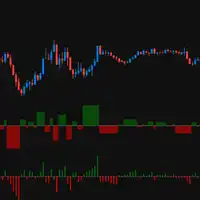
Introduction to Technical Analysis
Technical analysis is a method used in binary options trading to predict future price movements based on historical market data. It involves studying charts, patterns, and indicators to identify trends and make informed trading decisions.
Chart Patterns and Their Significance
Chart patterns are visual representations of price movements on a trading chart. Traders analyze these patterns to identify potential trend reversals, breakouts, or continuations. Common chart patterns include support and resistance levels, trendlines, head and shoulders, triangles, and flags.
- Examples:
- Support and Resistance Levels: Identifying horizontal price levels where buying or selling pressure is expected to be significant.
- Trendlines: Drawing lines to connect higher lows or lower highs to identify upward or downward trends.
- Head and Shoulders: Recognizing a pattern where the price reaches a peak (head) between two lower peaks (shoulders), signaling a potential trend reversal.
- Applications:
- Using support and resistance levels to determine entry and exit points for binary options trades.
- Identifying chart patterns to anticipate potential breakouts or trend reversals.
- Combining different chart patterns to validate trade signals and increase the probability of successful trades.
Key Technical Indicators for Binary Options Trading
Technical indicators are mathematical calculations applied to price data to generate trading signals. They help traders identify potential entry and exit points for binary options trades. Examples of key technical indicators used in binary options trading include moving averages, Bollinger Bands, MACD (Moving Average Convergence Divergence), RSI (Relative Strength Index), and stochastic oscillator.
- Examples:
- Moving Averages: Calculating the average price over a specified period to identify trends and potential entry or exit points.
- Bollinger Bands: Plotting bands around the moving average to visualize price volatility and potential price reversals.
- Relative Strength Index (RSI): Measuring the magnitude of recent price changes to identify overbought or oversold conditions.
- Applications:
- Using moving averages to confirm trend directions and generate trade signals.
- Using Bollinger Bands to identify periods of low volatility (squeeze) or potential price breakouts.
- Utilizing RSI to identify potential reversal points or confirm the strength of a trend.
Utilizing Support and Resistance Levels
Support and resistance levels are price levels where the market tends to stall, reverse, or experience increased buying/selling pressure. Traders use these levels to identify potential areas of price reversal or continuation. Support levels are where prices are expected to bounce back from a decline, while resistance levels are where prices are expected to encounter selling pressure.
- Examples:
- Support Levels: Identifying price levels where buying pressure is strong and price declines are likely to be halted.
- Resistance Levels: Identifying price levels where selling pressure is strong and price advances are likely to be halted.
- Applications:
- Placing buy trades near support levels and sell trades near resistance levels in anticipation of price reversals.
- Using support and resistance levels to set stop-loss orders to manage risk.
- Monitoring how price reacts at support or resistance levels to confirm or invalidate trading strategies.
Candlestick Patterns and Their Interpretation
Candlestick patterns provide insights into market sentiment and potential price reversals. Traders analyze the shape, color, and position of candlesticks to understand the balance between buyers and sellers. Common candlestick patterns include doji, engulfing patterns, hammer, shooting star, and evening/morning star. These patterns help traders make decisions based on the potential direction of price movements.
- Examples:
- Doji: A candlestick with a small body and equal or near-equal open and close prices, indicating market indecision.
- Engulfing Patterns: A pattern where a larger candle completely engulfs the previous smaller candle, indicating potential trend reversal.
- Hammer: A candlestick with a small body and a long lower shadow, suggesting a potential bullish reversal.
- Applications:
- Recognizing doji patterns to anticipate potential trend reversals or periods of market consolidation.
- Identifying engulfing patterns to signal potential trend reversals and generate trade signals.
- Using hammer patterns to identify potential buying opportunities after a downtrend.




